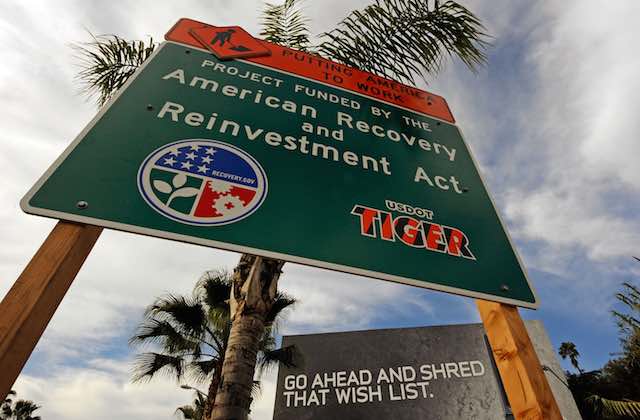You wouldn’t know it by the tenor of the recent gubernatorial elections, but states’ pockets have grown fat under President Obama. That’s because his two signature economic initiatives–the 2009 Recovery Act and the 2010 Affordable Care Act–pumped tens of billions of dollars into state coffers, giving state leaders the chance to bolster services without raising revenue. At least at the local level, you’d think fiscal conservatives would love the guy.
The National Association of State Budget Officers published a report today outlining spending trends. To my eye, here’s the takehome: States have largely stopped making new investments in services, so what their residents do and don’t get from government has been driven primarily by federal choices. First, take a look at this graph from the report, which shows federal and state spending trends over the past three fiscal years.

So overall state spending fell in fiscal year 2012–marking the first decline in total state spending in the 27-year history of this annual report. That was a big, historic change. It corresponed with the gradual sunsetting of the 2009 Recovery Act. Remember that? The reviled stimulus spending that eked out of Congress at a level much lower than economists of all stripes recommended? Well, the initial surge of stimulus spending ran out, federal funding to states plummeted by nearly 10 percent and overall state spending fell for the first time in a generation. The White House and others have argued that the stimulus averted a full-on depression. But imagine if it had been funded at the levels economists recommended?
Anyway, that didn’t happen. But in fiscal year 2014, total state spending shoots back up. This coincides with the onset of Obamacare–or specifically, the expansion of Medicaid, which has put an additional $41.8 billion into state budgets this fiscal year. Here’s what that looks like for Medicaid programs themselves, again in a graph from the state budget directors’ report.

This is important not only because it has allowed more than 8 million poor people to get health insurance. That’s happened while barely affecting state spending on the program. Understand that Medicaid has been and remains the biggest ticket item in any state’s budget. It accounts consistently for roughly a quarter of overall state spending; K-12 education comes in second, at about 20 percent. Every dollar the states don’t spend on Medicaid, is money they can invest elsewhere–in higher education, transportation, tax breaks.
So the Obama years have been very good to state budgets. The feds have financed massive public investment in local services that have staved off collapse for both the overall economy and for residents in the greatest need. But they have done so over the kicking and screaming objections of a great many local elected officials. Funny, that.
